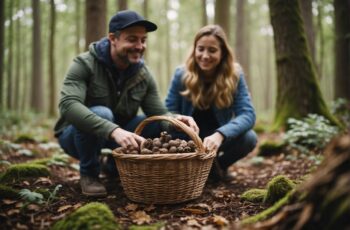Mushroom hunting is an engaging pastime that allows you to connect with nature and potentially bring home a delicious bounty. Before you embark on your fungal foraging journey, it’s essential to arm yourself with the right information. Knowing where to find mushrooms is just the start; understanding the local varieties and how to identify them correctly is crucial for both your safety and success.
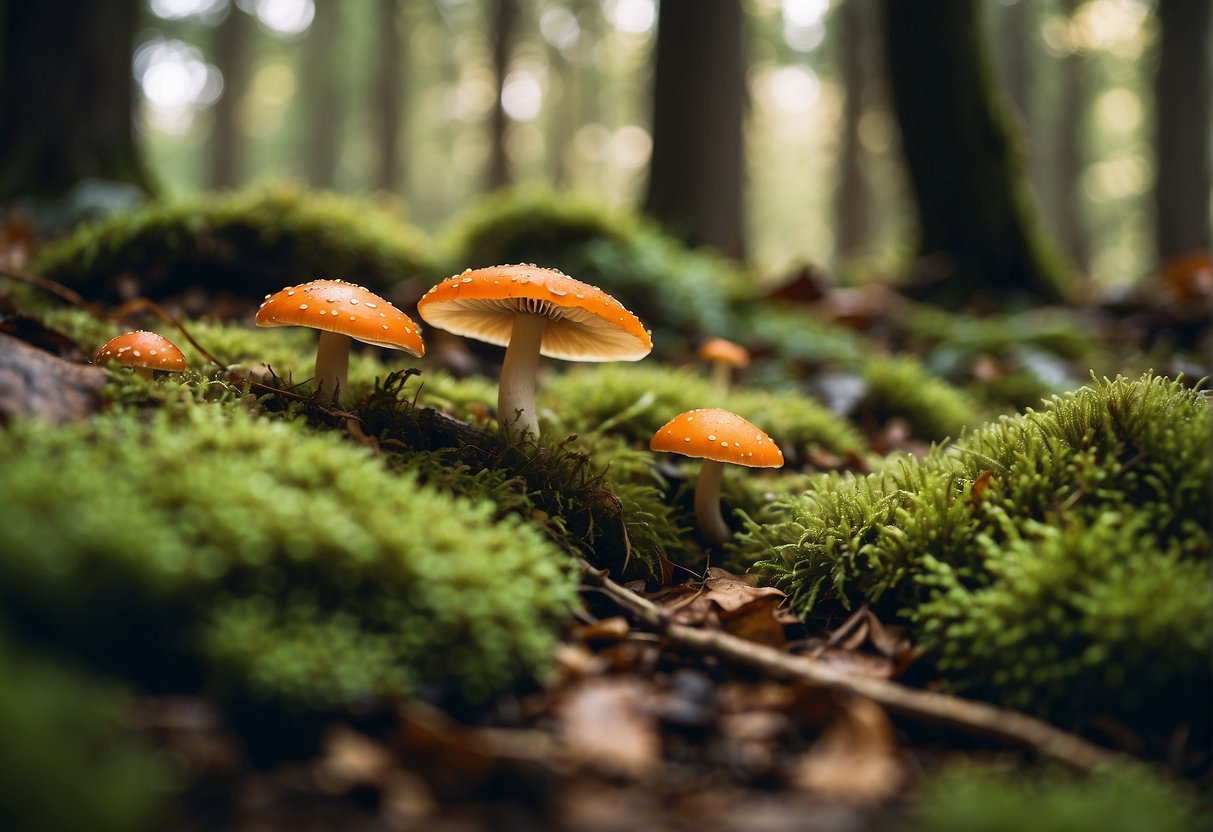
As with most foraging activities, knowing the seasons is your key to success when searching for mushrooms. Different types of mushrooms thrive in different climates and times of the year. Additionally, familiarizing yourself with the foraging laws and ethical guidelines in your area is important to preserve the integrity of local ecosystems and to ensure a sustainable harvest for years to come. Creating connections within the mushroom hunting community can also greatly enhance your knowledge and provide a sense of camaraderie.
Key Takeaways
- Mushroom hunting merges nature exploration with the chance to find edible treasures.
- An understanding of regional varieties and seasons is crucial for successful foraging.
- Adhering to foraging laws and building community knowledge are important for ethical hunting.
Essentials of Mushroom Hunting
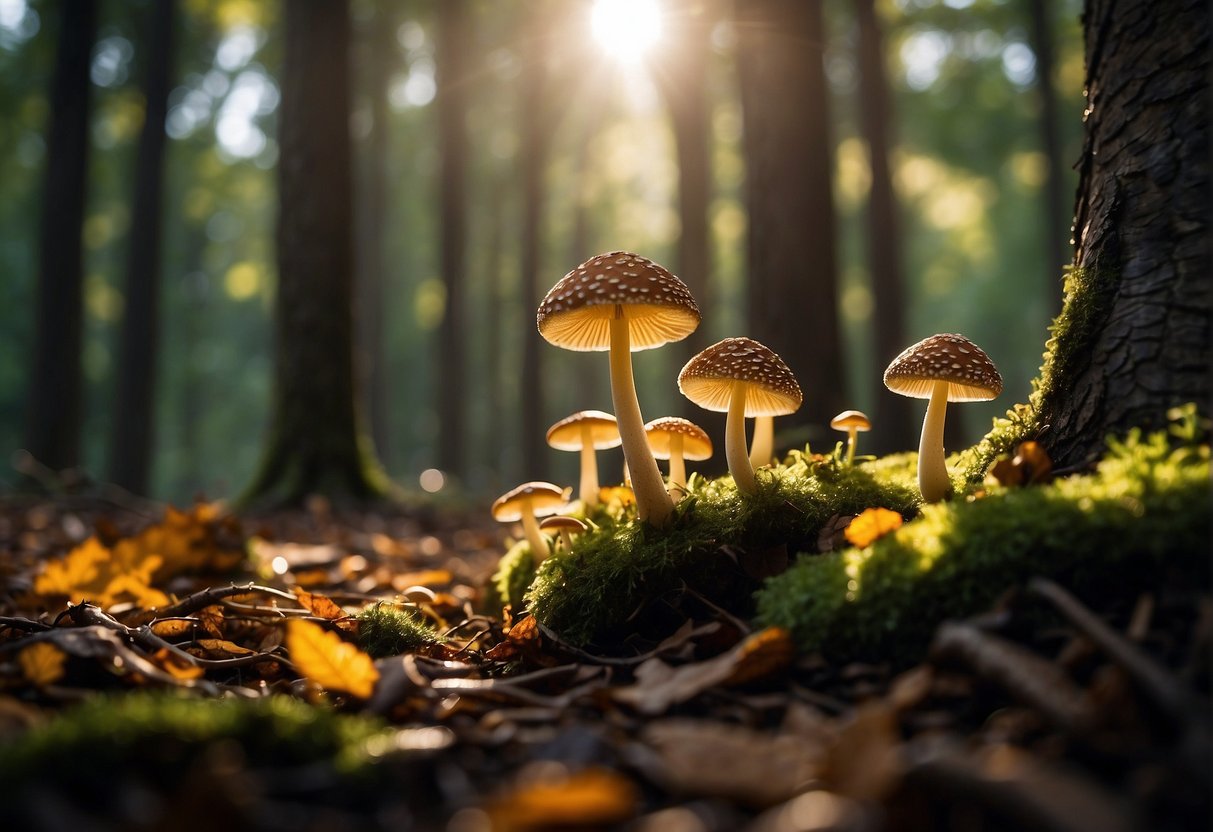
Venturing into the realm of mushroom hunting marries the excitement of foraging with the serene appreciation of nature. To ensure a successful and safe experience, there are crucial aspects you need to consider.
Equipment and Preparation
When setting out on a mushroom foraging adventure, your gear is paramount. You’ll need a sturdy basket or mesh bag, which allows spores to spread, contributing to the ecosystem. A knife is essential for cutting mushroom stems without disturbing their roots. Also, pack a soft brush to clean your harvest without damaging it, and a reliable field guide to aid in mushroom identification.
Optimal Weather Conditions for Foraging
Mushrooms thrive in specific weather conditions. A period following a rain, coupled with warm temperatures, creates an ideal environment for them to flourish. Look for times when there is ample moisture yet not direct sunlight, as this promotes fungal growth. Your best bets are often south-facing slopes and river bottoms where these conditions naturally converge.
Safety and Mushroom Identification
Safety in mushroom hunting cannot be overstressed. Amongst the edible treasures are poisonous mushrooms that can be harmful, such as false morels. Accurate identification is crucial. Study your guidebook and consider joining seasoned foragers to learn before you leap. Knowledgeable foraging ensures that the mushrooms you collect, such as the prized morels and chanterelles, are safe and savory additions to your table.
Understanding Mushroom Habitats
Your success in foraging mushrooms lies deeply in understanding their habitats. Morels, for instance, are partial to burn areas and forests with dead elms, while chanterelles prefer hardwood forests, like those involving ash trees. Pay attention to these specific environments, as different species have varied preferences for where they call home.
Seasonal Timing and Varieties
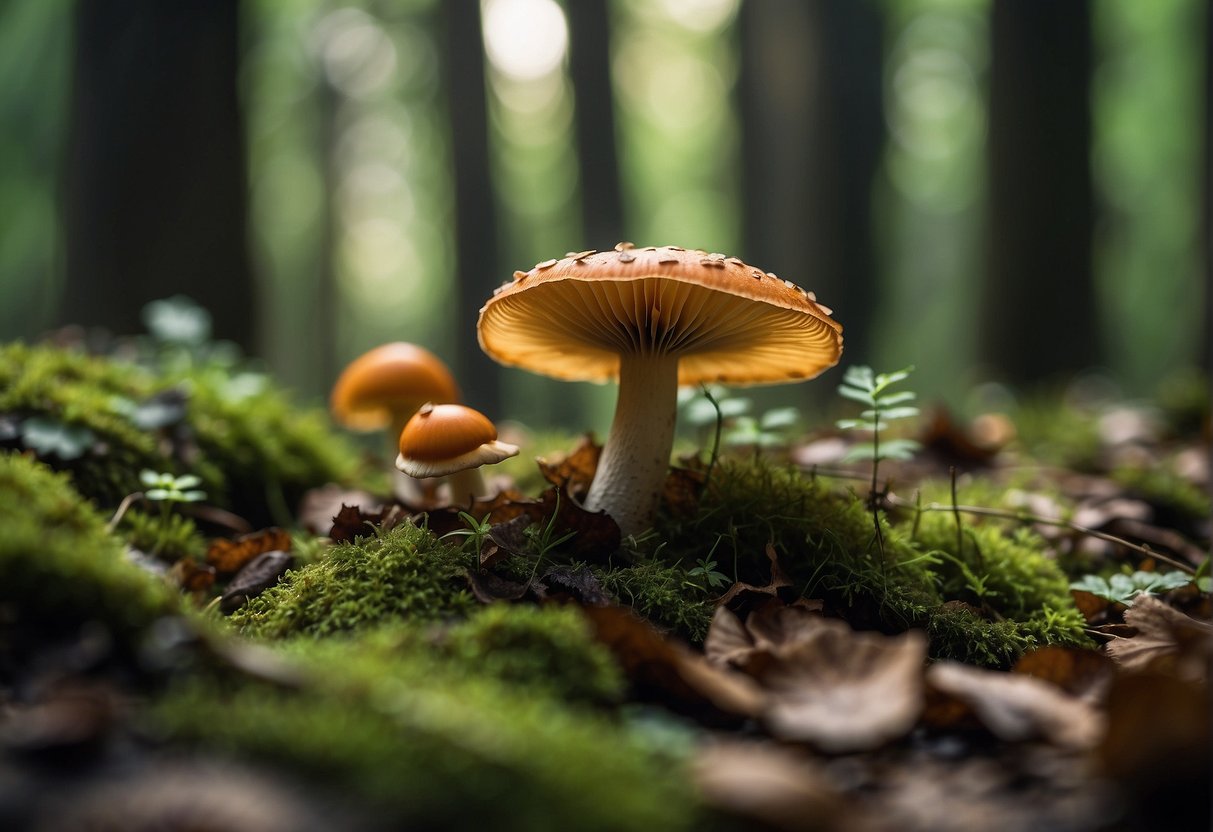
When embarking on a mushroom hunting adventure, timing is crucial. Equipped with the right knowledge of when specific mushrooms such as morels and chanterelles make their yearly debut, you can ensure a successful harvest. Remember, each variety has its prime season for foraging.
Spring and Morel Mushrooms
Spring, specifically from late March through June, is your prime time to hunt for morel mushrooms. These sought-after fungi prefer the damp spring soil, typically flourishing in regions with elm, ash, and aspen trees. The blooming of lilacs is often a nature’s signpost that morels are not far behind. Plan your forays after a good rain and keep an eye on the ground for their distinctive honeycomb pattern.
- Best Locations: River bottoms, woodland areas, and burn sites
- Timing: Following a spring rainfall
Fall Foraging Opportunities
Come fall, forests become a tapestry of colors and an ideal backdrop for mushroom foraging. It’s not just about the vibrant leaves; this season is a gift for hunters of chanterelles, fiddleheads, and pheasant backs. They thrive in the cooler temperatures and moist conditions that autumn ushers in. Chanterelles, with their bright appearance and fruity scent, are particularly prized during this period.
- Best Locations: Damp, mossy areas and near hardwood trees
- Timing: After the fall rains start
For both spring and fall, dressing appropriately and equipping yourself with a good field guide can go a long way. Happy foraging!
Regional Focus for Mushroom Hunters
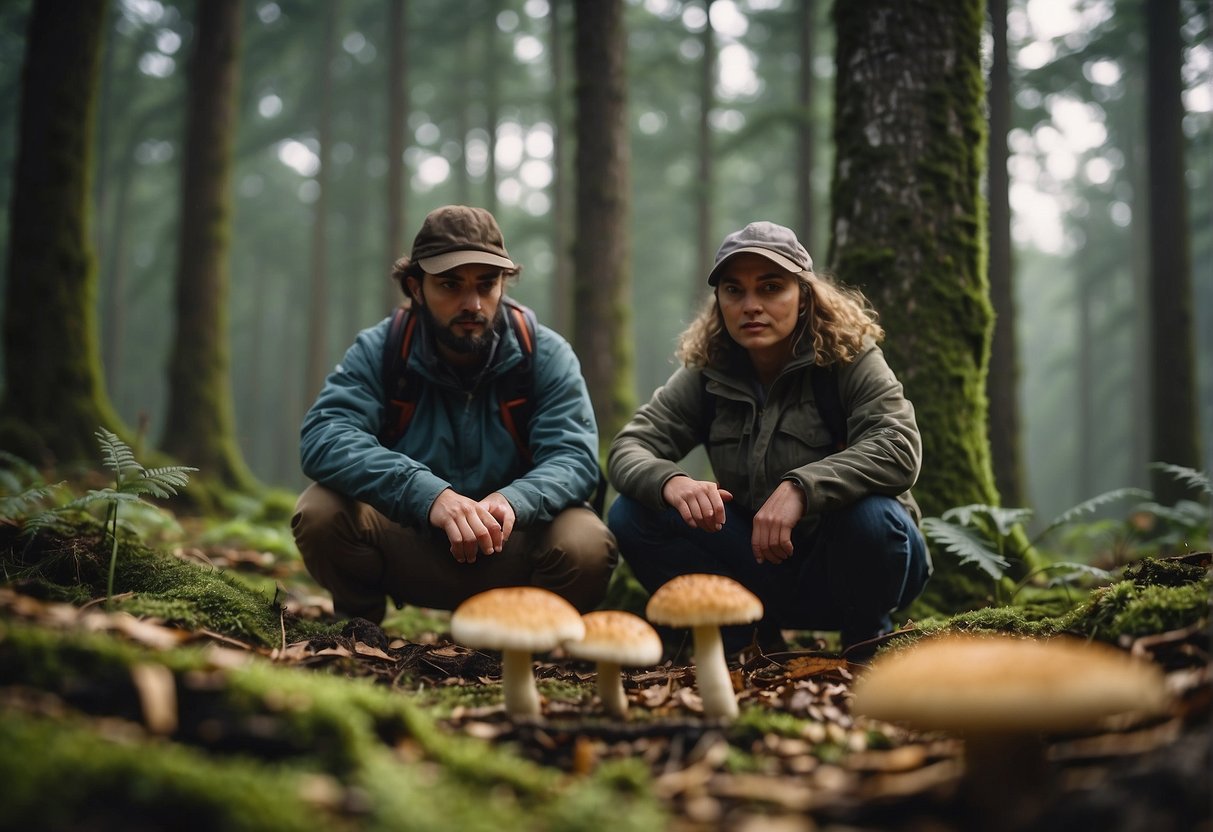
Embarking on a mushroom foraging adventure requires knowing your regional hotspots. Certain states offer a wealth of foraging opportunities due to their unique climates and terrains.
Popular States for Foraging
Michigan: Renowned for its moist and forested landscapes, Michigan offers an abundant variety of mushrooms. Morel hunters often head to public lands following a spring rain for the best chances of a bountiful harvest.
Minnesota and Wisconsin: These states’ vibrant forests and river valleys make them prime spots, especially on north-facing slopes where mushrooms like cooler, shaded conditions.
Ohio and Indiana: The Midwest’s temperate forests serve as fruitful grounds for mushroom enthusiasts, with state parks providing public land for foragers.
Pacific Northwest: Here, the Olympic Peninsula in Washington becomes a paradise for mushroom hunters. This region is known for its dense forests and high precipitation, nurturing a diverse mycological array.
Oregon: Boasting a variety of climates and terrains, from coastline to mountain, Oregon is a haven for a range of fungi, including the prized chanterelles and morels.
Mushroom Foraging in Diverse Terrains
Northeast: New York and its neighboring states offer rich deciduous woodlands where you can find mushrooms growing in abundance, especially during the moist autumn months.
South: While mushroom hunting can be challenging due to the climate, foragers can be rewarded with morels, especially when searching in the early spring as temperatures start to rise.
In areas like the Northeast or the Midwest, shifting your search based on the topography is crucial. Mushrooms often flourish on north-facing slopes and areas with ample moisture and shade.
Private land: Remember to always seek permission before foraging on private property, regardless of the state. Respect for landowners and local regulations will ensure that mushroom hunting remains a welcome and sustainable activity.
Foraging Laws and Ethics
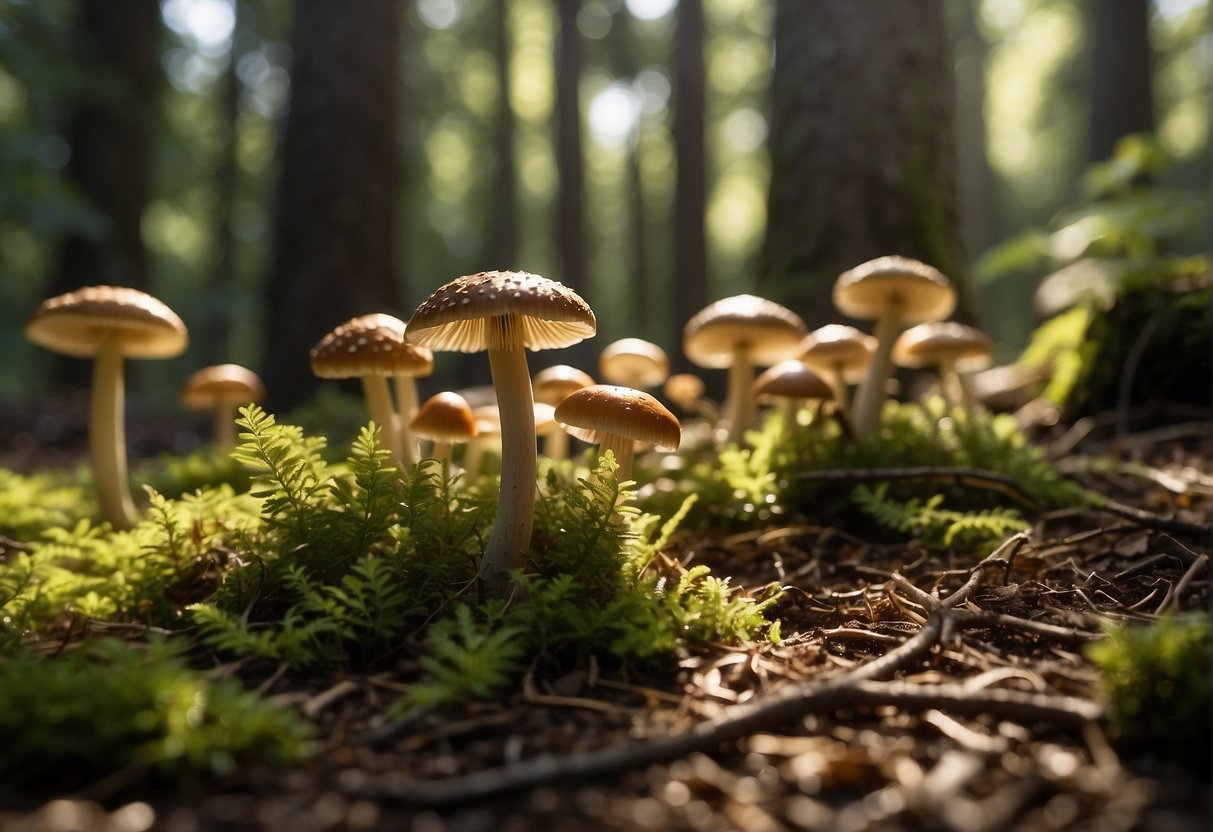
Before you head out into the woods with a basket in hand, it’s crucial to understand the specific regulations and responsible practices that ensure mushroom hunting remains an enjoyable and sustainable activity for all.
Land Access and Permissions
Public Lands: Generally, you’re free to forage on public lands, but you must adhere to specific guidelines. Each national forest, for instance, has its own set of rules and regulations regarding foraging. Always check beforehand—either through their official websites or by contacting the forest department—to avoid fines or legal issues. Some areas may require a permit or impose a fee for foraging.
- Private Land: Foraging on private property without permission is trespassing. Always seek the landowner’s consent first. Use local community groups or platforms like Facebook to connect with landowners willing to allow foraging on their land.
Sustainability and Community Practices
Foraging Ethics: Your conduct while foraging impacts both the environment and the local community. Adhere to the principle of “take only what you need” to avoid depleting resources. Harvest mushrooms responsibly by cutting the stem with a knife, which allows the fungi to continue growing.
- Contribution to Community: Be an active participant in local foraging communities, whether in-person or through online forums on sites like Facebook. Sharing knowledge and experiences can help foster sustainable practices and a sense of stewardship towards our natural resources. Remember to leave the habitat undisturbed, ensuring that the foraging grounds remain fertile for future seasons.
Learning and Community Resources
Embarking on the journey of mushroom hunting can be both exciting and enriching. By tapping into community resources such as local foraging classes and networks of experienced foragers, you can gain valuable hands-on experience, discover nature’s bounty, and connect with like-minded individuals.
Foraging Classes and Tours
If you’re keen to learn about edible wild plants and fungi, foraging classes and tours are invaluable. They offer a structured learning environment led by experienced guides. Eat The Planet is a great resource where you can find up-to-date listings of local foraging tours that might be happening in your area, be it mushroom hunting groups, edible plant walks, or wildcrafting herbal classes.
For a more focused experience, mushroom-specific expeditions are offered as well, allowing you to learn intricate details about fungal species. These outings are not just educational—they’re adventures that take you through the wonders of the wilderness.
Networking with Local Foragers
To deepen your foraging knowledge, consider joining a local foragers group. Many communities have Facebook groups or other social platforms where enthusiasts gather to share tips, locations, and experiences. Connecting with a community of foragers provides a space to ask questions, seek advice, and find companions for your next foraging trip.
Don’t hesitate to contact the organizers of foraging tours or classes to inquire about additional resources or upcoming events that might not be publicly listed. Frequently, these communities are happy to welcome newcomers and share the joys and intricacies of foraging with anyone eager to learn.
Remember, becoming an adept forager takes time, but with these resources at your disposal, you’re well on your way to mastering the art of mushroom hunting. Happy foraging!


